Elena Ferrante, the bestselling pseudonymous Italian author behind "My Brilliant Friend", has named her favourite 40 books by female authors around the world.
Deler her Elena Ferrante sin fullstendige liste, inkludert beskrivelser av alle bøkene på listen. God og variert inspirasjon til hva man kan lese av kvinner fra hele verden.
- 1.

Ifemelu and Obinze are young and in love when they depart military-ruled Nigeria for the West. Beautiful, self-assured Ifemelu heads for America, where despite her academic success, she is forced to grapple with what it means to be Black for the first time. Quiet, thoughtful Obinze had hoped to join her, but with post–9/11 America closed to him, he instead plunges into a dangerous, undocumented life in London.
- 2.

Decades later, Laura’s sister Iris recounts her memories of their childhood, and of the dramatic deaths that have punctuated their wealthy, eccentric family’s history. Intertwined with Iris’s account are chapters from the scandalous novel that made Laura famous, in which two illicit lovers amuse each other by spinning a tale of a blind killer on a distant planet.
- 3.

Set in Iran in the decade following the 1979 Islamic Revolution, this moving, richly imagined novel is narrated by the ghost of Bahar, a thirteen-year-old girl, whose family is compelled to flee their home in Tehran for a new life in a small village, hoping in this way to preserve both their intellectual freedom and their lives. But they soon find themselves caught up in the post-revolutionary chaos that sweeps across their ancient land. Bahar’s mother, after a tragic loss, will embark on a long, eventful journey in search of meaning in a world swept up in the post-revolutionary madness.
- 4.
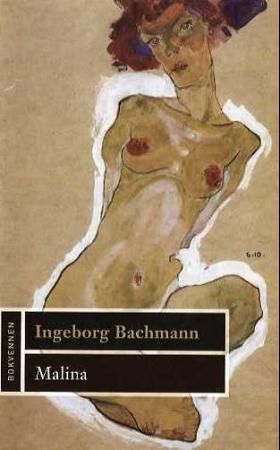
In Malina, originally published in German in 1971, Ingeborg Bachmann invites the reader into a world stretched to the very limits of language. An unnamed narrator, a writer in Vienna, is torn between two men: viewed, through the tilting prism of obsession, she travels further into her own madness, anxiety, and genius. Malina explores love, "deathstyles," the roots of fascism, and passion.
- 5.

With the grit of Raymond Carver, the humor of Grace Paley, and a blend of wit and melancholy all her own, Berlin crafts miracles from the everyday, uncovering moments of grace in the Laundromats and halfway houses of the American Southwest, in the homes of the Bay Area upper class, among switchboard operators and struggling mothers, hitchhikers and bad Christians.
- 6.

Rachel Cusk's Outline is a novel in ten conversations. Spare and lucid, it follows a novelist teaching a course in creative writing over an oppressively hot summer in Athens. She leads her students in storytelling exercises. She meets other visiting writers for dinner. She goes swimming in the Ionian Sea with her neighbor from the plane. The people she encounters speak volubly about themselves: their fantasies, anxieties, pet theories, regrets, and longings. And through these disclosures, a portrait of the narrator is drawn by contrast, a portrait of a woman learning to face a great loss.
- 7.

Several days before Christmas 2003, John Gregory Dunne and Joan Didion saw their only daughter, Quintana, fall ill with what seemed at first flu, then pneumonia, then complete septic shock. She was put into an induced coma and placed on life support. Days later—the night before New Year’s Eve—the Dunnes were just sitting down to dinner after visiting the hospital when John Gregory Dunne suffered a massive and fatal coronary. In a second, this close, symbiotic partnership of forty years was over. Four weeks later, their daughter pulled through. Two months after that, arriving at LAX, she collapsed and underwent six hours of brain surgery at UCLA Medical Center to relieve a massive hematoma.
- 8.

“I was the Arminuta, the girl returned. I spoke another language, I no longer knew who I belonged to. The word ‘mama’ stuck in my throat like a toad. And, nowadays, I really have no idea what kind of place mother is. It is not mine in the way one might have good health, a safe place, certainty.”
Without warning or explanation, an unnamed 13-year-old girl is sent away from the family she has always thought of as hers to live with her birth family: a large, chaotic assortment of individuals whom she has never met and who seem anything but welcoming. Thus begins a new life, one of struggle, tension, and conflict, especially between the young girl and her mother. But in her relationship with Adriana and Vincenzo, two of her newly acquired siblings, she will find the strength to start again and to build a new and enduring sense of self.
- 9.

Winner of the 2019 Albertine Prize and Lambda Literary Award. Kimiâ Sadr fled Iran at the age of ten in the company of her mother and sisters to join her father in France. Now twenty-five and facing the future she has built for herself, as well as the prospect of a new generation, Kimiâ is inundated by her own memories and the stories of her ancestors, which come to her in unstoppable, uncontainable waves. In the waiting room of a Parisian fertility clinic, generations of flamboyant Sadrs return to her, including her formidable great-grandfather Montazemolmolk, with his harem of fifty-two wives, and her parents, Darius and Sara, stalwart opponents of each regime that befalls them. It is Kimiâ herself―punk-rock aficionado, storyteller extraordinaire, a Scheherazade of our time, and above all a modern woman divided between family traditions and her own “disorientalization”―who forms the heart of this bestselling and beloved novel, recipient of numerous literary honors.
- 10.

Set in the prewar Indochina of Marguerite Duras’s childhood, this is the haunting tale of a tumultuous affair between an adolescent French girl and her Chinese lover. In spare yet luminous prose, Duras evokes life on the margins of Saigon in the waning days of France’s colonial empire, and its representation in the passionate relationship between two unforgettable outcasts.
- 11.

Considered by many to be the iconic French memoirist's defining work and a breakout bestseller when published in France in 2008
The Years is a personal narrative of the period 1941 to 2006 told through the lens of memory, impressions past and present—even projections into the future—photos, books, songs, radio, television and decades of advertising, headlines, contrasted with intimate conflicts and writing notes from 6 decades of diaries.
- 12.

An Italian family, sizable, with its routines and rituals, crazes, pet phrases, and stories, doubtful, comical, indispensable, comes to life in the pages of Natalia Ginzburg’s Family Lexicon. Giuseppe Levi, the father, is a scientist, consumed by his work and a mania for hiking—when he isn’t provoked into angry remonstration by someone misspeaking or misbehaving or wearing the wrong thing. Giuseppe is Jewish, married to Lidia, a Catholic, though neither is religious; they live in the industrial city of Turin where, as the years pass, their children find ways of their own to medicine, marriage, literature, politics. It is all very ordinary, except that the background to the story is Mussolini’s Italy in its steady downward descent to race law and world war. The Levis are, among other things, unshakeable anti-fascists. That will complicate their lives.
- 13.
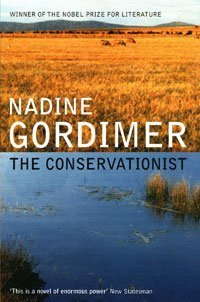
Mehring is rich. He has all the privileges and possessions that South Africa has to offer, but his possessions refuse to remain objects. His wife, son, and mistress leave him; his foreman and workers become increasingly indifferent to his stewardship; even the land rises up, as drought, then flood, destroy his farm.
- 14.
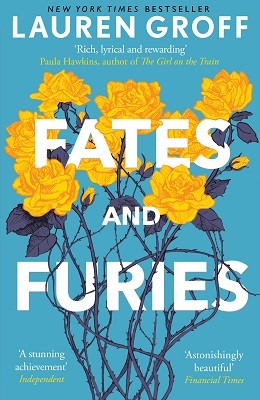
At age twenty-two, Lotto and Mathilde are tall, glamorous, madly in love, and destined for greatness. A decade later, their marriage is still the envy of their friends, but with an electric thrill we understand that things are even more complicated and remarkable than they have seemed. With stunning revelations and multiple threads, and in prose that is vibrantly alive and original, Groff delivers a deeply satisfying novel about love, art, creativity, and power that is unlike anything that has come before it. Profound, surprising, propulsive, and emotionally riveting, it stirs both the mind and the heart.
- 15.

In her late thirties, when her friends are asking when they will become mothers, the narrator of Heti’s intimate and urgent novel considers whether she will do so at all. In a narrative spanning several years, casting among the influence of her peers, partner, and her duties to her forbearers, she struggles to make a wise and moral choice. After seeking guidance from philosophy, her body, mysticism, and chance, she discovers her answer much closer to home.
- 16.
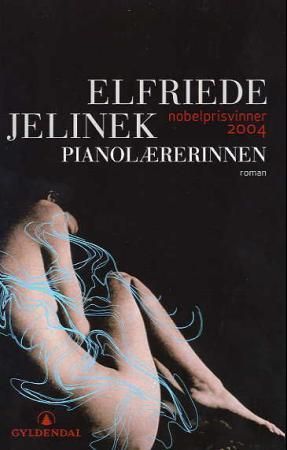
The most popular work from provocative Austrian Nobel laureate Elfriede Jelinek, The Piano Teacher is a searing portrait of a woman bound between a repressive society and her darkest desires. Erika Kohut is a piano teacher at the prestigious and formal Vienna Conservatory, who still lives with her domineering and possessive mother. Her life appears boring, but Erika, a quiet thirty-eight-year-old, secretly visits Turkish peep shows at night and watched sadomasochistic films. Meanwhile, a handsome, self-absorbed, seventeen-year-old student has become enamored with Erika and sets out to seduce her. She resists him at firstbut then the dark passions roiling under the piano teacher’s subdued exterior explode in a release of perversity, violence, and degradation.
- 17.

On a sweltering summer day, Makiko travels from Osaka to Tokyo, where her sister Natsu lives. She is in the company of her daughter, Midoriko, who has lately grown silent, finding herself unable to voice the vague yet overwhelming pressures associated with adolescence. The story of these three women reunited in a working-class neighborhood of Tokyo is told through the gaze of Natsu—thirty years old, an aspiring writer, haunted by hardships endured in her youth. Over the course of their few days together in the capital, Midoriko’s silence will prove a catalyst for each woman to confront her fears and family secrets.
On yet another blistering summer’s day eight years later, Natsu, during a journey back to her native city, struggles with her own indeterminate identity as she confronts anxieties about growing old alone and childless.
- 18.
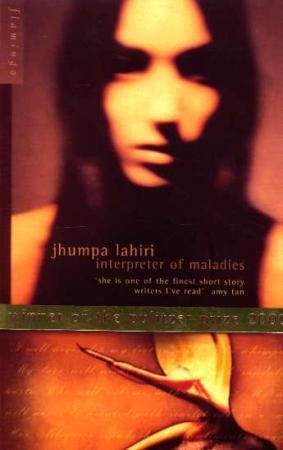
A blackout forces a young Indian American couple to make confessions that unravel their tattered domestic peace. An Indian American girl recognizes her cultural identity during a Halloween celebration while the Pakastani civil war rages on television in the background. A latchkey kid with a single working mother finds affinity with a woman from Calcutta. In the title story, an interpreter guides an American family through the India of their ancestors and hears an astonishing confession.
- 19.
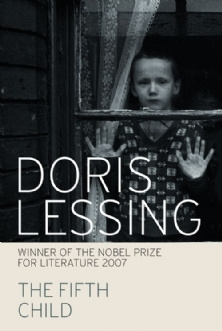
Doris Lessing's contemporary gothic horror story—centered on the birth of a baby who seems less than human—probes society's unwillingness to recognize its own brutality.Harriet and David Lovatt, parents of four children, have created an idyll of domestic bliss in defiance of the social trends of late 1960s England. While around them crime and unrest surge, the Lovatts are certain that their old-fashioned contentment can protect them from the world outside—until the birth of their fifth baby. Gruesomely goblin-like in appearance, insatiably hungry, abnormally strong and violent, Ben has nothing innocent or infant-like about him. As he grows older and more terrifying, Harriet finds she cannot love him, David cannot bring himself to touch him, and their four older children are afraid of him. Understanding that he will never be accepted anywhere, Harriet and David are torn between their instincts as parents and their shocked reaction to this fierce and unlovable child whose existence shatters their belief in a benign world.
- 20.

The Passion According to G.H., Clarice Lispector’s mystical novel of 1964, concerns a well-to-do Rio sculptress, G.H., who enters her maid’s room, sees a cockroach crawling out of the wardrobe, and, panicking, slams the door ―crushing the cockroach ―and then watches it die. At the end of the novel, at the height of a spiritual crisis, comes the most famous and most genuinely shocking scene in Brazilian literature…
- 21.

In Valeria Luiselli’s fiercely imaginative follow-up to the American Book Award-winning Tell Me How It Ends, an artist couple set out with their two children on a road trip from New York to Arizona in the heat of summer. As the family travels west, the bonds between them begin to fray: a fracture is growing between the parents, one the children can almost feel beneath their feet.
Through ephemera such as songs, maps and a Polaroid camera, the children try to make sense of both their family’s crisis and the larger one engulfing the news: the stories of thousands of kids trying to cross the southwestern border into the United States but getting detained—or lost in the desert along the way.
- 22.

Once considered the greatest writer of Italy’s postwar generation―and admired by authors as varied as John Banville and Rivka Galchen―Elsa Morante is experiencing a literary renaissance, marked not least by Ann Goldstein’s translation of Arturo’s Island, the novel that brought Morante international fame. Imbued with a spectral grace, as if told through an enchanted looking glass, the novel follows the adolescent Arturo through his days on the isolated Neapolitan island of Procida, where―his mother long deceased, his father often absent, and a dog as his sole companion―he roams the countryside and the beaches or reads in his family’s lonely, dilapidated mansion. This quiet, meandering existence is upended when his father brings home a beautiful sixteen-year-old bride, Nunziatella.
- 23.

Sethe was born a slave and escaped to Ohio, but eighteen years later she is still not free. Sethe has too many memories of Sweet Home, the beautiful farm where so many hideous things happened. And Sethe’s new home is haunted by the ghost of her baby, who died nameless and whose tombstone is engraved with a single word: Beloved.
- 24.

In story after story in this brilliant new collection, Alice Munro pinpoints the moment a person is forever altered by a chance encounter, an action not taken, or a simple twist of fate. Her characters are flawed and fully human: a soldier returning from war and avoiding his fiancée, a wealthy woman deciding whether to confront a blackmailer, an adulterous mother and her neglected children, a guilt-ridden father, a young teacher jilted by her employer. Illumined by Munro’s unflinching insight, these lives draw us in with their quiet depth and surprise us with unexpected turns. And while most are set in her signature territory around Lake Huron, some strike even closer to home: an astonishing suite of four autobiographical tales offers an unprecedented glimpse into Munro’s own childhood. Exalted by her clarity of vision and her unparalleled gift for storytelling, Dear Life shows how strange, perilous, and extraordinary ordinary life can be.
- 25.

A lay community of thoroughly mixed-up people is encamped outside Imber Abbey, home of an order of sequestered nuns. A new bell is being installed when suddenly the old bell, a legendary symbol of religion and magic, is rediscovered. And then things begin to change. Meanwhile the wise old Abbess watches and prays and exercises discreet authority. And everyone, or almost everyone, hopes to be saved, whatever that may mean. Originally published in 1958, this funny, sad, and moving novel is about religion, sex, and the fight between good and evil.
- 26.

Sardinia, 1950s: Formerly beautiful and at one time betrothed to a fallen soldier, Bonaria Urrai has a long-held covenant with the dead. She is revered and feared in equal measure as the village’s Accabadora, midwife to the dying, easing their suffering—and sometimes ending it.
When Bonaria adopts Maria, the unloved fourth child of a widow, she tries to shield the girl from the truth about her role as an angel of mercy. Moved by the pleas of a young man crippled in an accident, she breaks her golden rule of familial consent, and in the recriminations that follow, Maria rejects her and flees Sardinia for Turin.
Adrift in the big city, Maria strives as ever to find love and acceptance, but her efforts are overshadowed by the creeping knowledge of a debt unpaid, of a duty and destiny that must one day be hers.
- 27.

Le Bal is a penetrating and incisive book set in early twentieth century France. At its heart is the tension between mother and daughter. The nouveau-riche Kampfs, desperate to become members of the social elite, decide to throw a ball to launch themselves into high society. For selfish reasons Mrs. Kampf forbids her teenage daughter, Antoinette, to attend the ball and banishes her to the laundry room. In an unpremeditated fury of revolt and despair, Antoinette takes a swift and horrible revenge. A cruel, funny and tender examination of class differences, Le Bal describes the torments of childhood with rare accuracy.
- 28.

In one of her most ambitious works, Joyce Carol Oates boldly reimagines the inner, poetic, and spiritual life of Norma Jeane Baker—the child, the woman, the fated celebrity, and idolized blonde the world came to know as Marilyn Monroe. In a voice startlingly intimate and rich, Norma Jeane tells her own story of an emblematic American artist—intensely conflicted and driven—who had lost her way. A powerful portrait of Hollywood’s myth and an extraordinary woman’s heartbreaking reality, Blonde is a sweeping epic that pays tribute to the elusive magic and devastation behind the creation of the great 20th-century American star.
- 29.

As John Banville writes in his introduction to The Love Object, Edna O'Brien "is, simply, one of the finest writers of our time." The thirty-one stories collected in this volume provide, among other things, a cumulative portrait of Ireland, seen from within and without.
- 30.
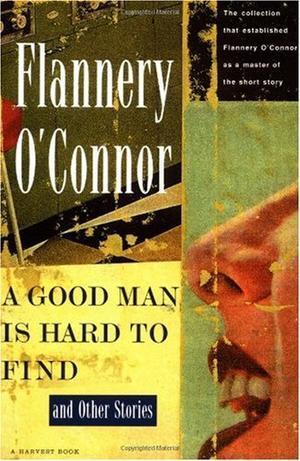
The collection that established O’Connor’s reputation as one of the American masters of the short story. The volume contains the celebrated title story, a tale of the murderous fugitive "The Misfit", as well as “The Displaced Person” and eight other stories.
- 31.

The stories and reportage collected in this volume form a powerful portrait of ordinary lives, both high and low, family dramas, love affairs, and struggles to pay the rent, set against the crumbling courtyards of the city itself, and the dramatic landscape of Naples Bay.
- 32.

John Ames is a preacher, the son of a preacher and the grandson (both maternal and paternal) of preachers. It’s 1956 in Gilead, Iowa, towards the end of the Reverend Ames’s life, and he is absorbed in recording his family’s story, a legacy for the young son he will never see grow up. Haunted by his grandfather’s presence, John tells of the rift between his grandfather and his father: the elder, an angry visionary who fought for the abolitionist cause, and his son, an ardent pacifist. He is troubled, too, by his prodigal namesake, Jack (John Ames) Boughton, his best friend’s lost son who returns to Gilead searching for forgiveness and redemption.
- 33.
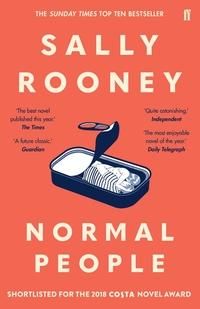
Connell and Marianne grew up in the same small town, but the similarities end there. At school, Connell is popular and well liked, while Marianne is a loner. But when the two strike up a conversation—awkward but electrifying—something life changing begins.
A year later, they’re both studying at Trinity College in Dublin. Marianne has found her feet in a new social world while Connell hangs at the sidelines, shy and uncertain. Throughout their years at university, Marianne and Connell circle one another, straying toward other people and possibilities but always magnetically, irresistibly drawn back together. And as she veers into self-destruction and he begins to search for meaning elsewhere, each must confront how far they are willing to go to save the other.
- 34.

Compared favorably to the works of Faulkner and Dickens, Arundhati Roy’s modern classic is equal parts powerful family saga, forbidden love story, and piercing political drama. The seven-year-old twins Estha and Rahel see their world shaken irrevocably by the arrival of their beautiful young cousin, Sophie. It is an event that will lead to an illicit liaison and tragedies accidental and intentional, exposing “big things [that] lurk unsaid” in a country drifting dangerously toward unrest.
- 35.

At the center of this invigorating novel are two unlikely friends, Archie Jones and Samad Iqbal. Hapless veterans of World War II, Archie and Samad and their families become agents of England’s irrevocable transformation. A second marriage to Clara Bowden, a beautiful, albeit tooth-challenged, Jamaican half his age, quite literally gives Archie a second lease on life, and produces Irie, a knowing child whose personality doesn’t quite match her name (Jamaican for “no problem”). Samad’s late-in-life arranged marriage (he had to wait for his bride to be born), produces twin sons whose separate paths confound Iqbal’s every effort to direct them, and a renewed, if selective, submission to his Islamic faith.
- 36.
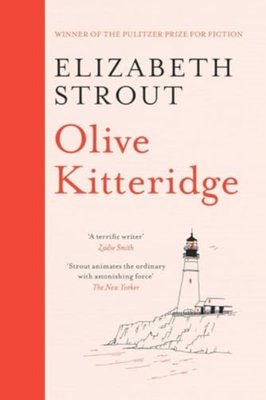
At times stern, at other times patient, at times perceptive, at other times in sad denial, Olive Kitteridge, a retired schoolteacher, deplores the changes in her little town of Crosby, Maine, and in the world at large, but she doesn’t always recognize the changes in those around her: a lounge musician haunted by a past romance; a former student who has lost the will to live; Olive’s own adult child, who feels tyrannized by her irrational sensitivities; and her husband, Henry, who finds his loyalty to his marriage both a blessing and a curse.
As the townspeople grapple with their problems, mild and dire, Olive is brought to a deeper understanding of herself and her life—sometimes painfully, but always with ruthless honesty. Olive Kitteridge offers profound insights into the human condition—its conflicts, its tragedies and joys, and the endurance it requires.
- 37.

The Door is an unsettling exploration of the relationship between two very different women. Magda is a writer, educated, married to an academic, public-spirited, with an on-again-off-again relationship to Hungary’s Communist authorities. Emerence is a peasant, illiterate, impassive, abrupt, seemingly ageless. She lives alone in a house that no one else may enter, not even her closest relatives. She is Magda’s housekeeper and she has taken control over Magda’s household, becoming indispensable to her. And Emerence, in her way, has come to depend on Magda. They share a kind of love—at least until Magda’s long-sought success as a writer leads to a devastating revelation.
- 38.

In this volume, the distinguished East German writer Christa Wolf retells the story of the fall of Troy, but from the point of view of the woman whose visionary powers earned her contempt and scorn. Written as a result of the author's Greek travels and studies, Cassandra speaks to us in a pressing monologue whose inner focal points are patriarchy and war. In the four accompanying pieces, which take the form of travel reports, journal entries, and a letter, Wolf describes the novel's genesis. Incisive and intelligent, the entire volume represents an urgent call to examine the past in order to insure a future.
- 39.

A Little Life follows four college classmates—broke, adrift, and buoyed only by their friendship and ambition—as they move to New York in search of fame and fortune. While their relationships, which are tinged by addiction, success, and pride, deepen over the decades, the men are held together by their devotion to the brilliant, enigmatic Jude, a man scarred by an unspeakable childhood trauma. A hymn to brotherly bonds and a masterful depiction of love in the twenty-first century, Hanya Yanagihara’s stunning novel is about the families we are born into, and those that we make for ourselves.
- 40.
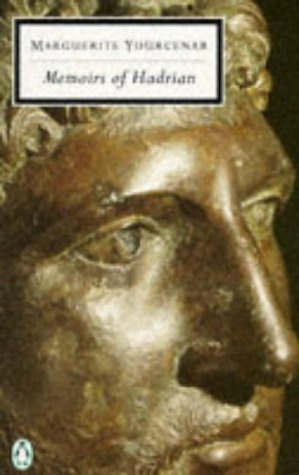
Both an exploration of character and a reflection on the meaning of history, Memoirs of Hadrian has received international acclaim since its first publication in France in 1951. In it, Marguerite Yourcenar reimagines the Emperor Hadrian's arduous boyhood, his triumphs and reversals, and finally, as emperor, his gradual reordering of a war-torn world, writing with the imaginative insight of a great writer of the twentieth century while crafting a prose style as elegant and precise as those of the Latin stylists of Hadrian's own era.
1 kommentar










































